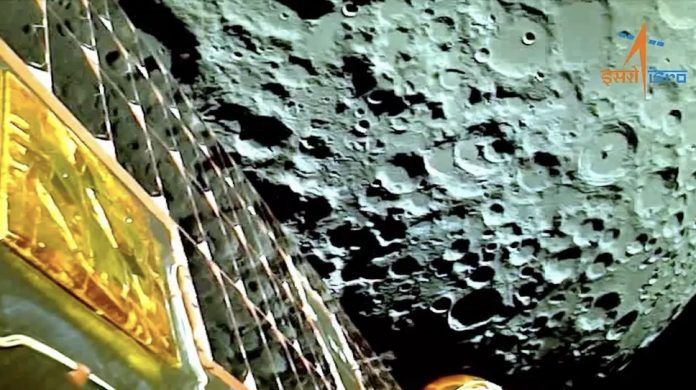
India’s Chandrayaan-3 spacecraft has entered lunar orbit, setting the stage for its second moon landing attempt in 18 days
India’s Chandrayaan-3 successfully entered lunar orbit after a 30-minute burn, marking a significant milestone in the mission. This is a huge milestone in space exploration for the country.
The spacecraft will gradually adjust its orbit to reduce apolune, preparing for a circular polar orbit at a 100-kilometre on August 17.
India’s Chandrayaan-3’s orbit arrival
The Vikram lander will separate from the mission’s propulsion module and enter a specific orbit, gearing up for the final descent and soft landing attempt on August 23. The targeted landing site, near the lunar South Pole region, sets Chandrayaan-3 apart from previous missions, aiming to make India the fourth country in the world to achieve a successful lunar landing.
The Moon, as viewed by #Chandrayaan3 spacecraft during Lunar Orbit Insertion (LOI) on August 5, 2023.#ISRO pic.twitter.com/xQtVyLTu0c
— LVM3-M4/CHANDRAYAAN-3 MISSION (@chandrayaan_3) August 6, 2023
The objective of a safe lunar landing
Building on the lessons from the Chandrayaan-2 mission’s hard landing in 2019 due to a software glitch, ISRO upgraded the software for Chandrayaan-3. The primary objective of this mission is to demonstrate a safe lunar landing while showcasing surface operations through the Pragyan rover and conducting in-situ science experiments.
Advancements in India’s lunar exploration
India’s Chandrayaan-3’s success would cement the country’s position in lunar exploration history. The mission will deploy the Vikram lander and the Pragyan rover, aiming to conduct scientific experiments during lunar daylight.
By leveraging green policies and adopting solar power, the spacecraft seeks to survive the harsh lunar nighttime, advancing India’s capabilities in space exploration.
India’s space exploration program has witnessed remarkable growth and accomplishments over the years. With notable missions like Chandrayaan-1, which confirmed the presence of water molecules on the moon, and Chandrayaan-2, despite its landing setback, continuing to collect valuable scientific data, India has demonstrated its prowess in space research.
Additionally, the Mars Orbiter Mission (Mangalyaan) stands as a shining example of cost-effective interplanetary missions, making India the first Asian nation to reach Mars’ orbit and the fourth space agency globally to do so. With a commitment to green policies and technological advancements, India’s space agency, ISRO, continues to inspire and contribute significantly to global space exploration endeavors.










